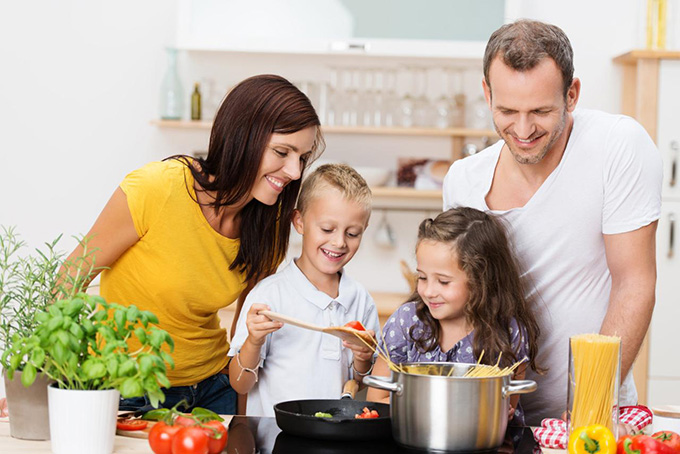
In a context where meals are tending to break down, where prepared meals are invading the shelves and where obesity is gaining ground, how can children be taught to eat well? In L’alimentation à découvert , sociologist Jean-Pierre Corbeau pleads for food education that goes beyond simple nutritional education. He also recalls that:
<em“the role of the family, the discovery of tastes through classroom activities or ways of doing and acting with food transmitted to the child constitute several dimensions of the socialization processes linked to food”.
A point on which Nathalie Rigal and Sophie Nicklaus also insist. In the same work, they note that, in the learning of tastes, food, social and emotional experiences are fundamental. While schools have a role to play, as highlighted in the recent Manifesto for food education everywhere, for everyone , the transmission of food codes and habits is first played out within the family. Beyond sharing the table, it is also about sharing the preparation of a meal.
Bread and containment
The economic crisis of 2008 was accompanied by a valuation of “do It Yourself” which found a revival with the confinement, in March 2020. The activity and cooking tutorials with his children then multiplied and making his bread has become the must of the family activity.
A study by Santé Publique France published in May 2020 points out that 37% of French people said they cook more during confinement. In addition, the IFOP survey for the Fraich’Fantaisy program carried out in October 2020 reveals that 14% of French people say they cook more than before confinement.
This same survey underlines that 84% of people questioned, all social categories combined, say they cook with their children and 22% at least once a week. In addition, a virtuous circle seems to be taking place since children who cooked with their parents cook more with their offspring.
This study also identifies the sources of inspiration for dishes and recipes with, in the top three, cooking shows, tutorials on the Internet and recipes that appear in magazines. Added to this are also blogs, applications or even cookbooks.
New stagings
As Françoise Hache-Bissette notes , the cookbook has changed considerably over the past 40 years and, in writings on awakening children’s tastes, several values have come together: fun and originality, delicacy and simplicity. What is interesting to note today in culinary mediation is the continuity between the production of online content and the release of cookbooks.
This is how a former participant in the Best Pastry Chef in 2015, a famous M6 show, then opened a YouTube channel , L’atelier de Roxane, which now has more than 4 million subscribers. His creed? A very rosy universe, family recipes, some made with her little girl facing the camera. She then successively released three books, where we find the tone of her YouTube channel, but also family photos.
The recipe book then also becomes an object of self-staging. This daily cooking which is embodied in an idealized family is also the editorial line developed by the blogger Mimi Thorisson between cookbooks and a very polished Instagram account where the culinary ideal and the family ideal meet.
Maternal transmission?
If the 2020 IFOP study speaks of the “parents” entity without distinguishing between the father or the mother, the CREDOC research notebooks published in 2004 base their entire study on transmission in the kitchen around “crossed views of daughters and mothers » . It must also be noted that, in the very contemporary staging of social networks, it is indeed the figure of the mother who imposes itself in a form that is either idealized and aestheticized or with a view to sharing tips and tricks at day-to-day.
In her doctoral thesis defended in 2019, Sarah Bastien also notes that women remain mainly responsible for cooking on a daily basis and recalls that at the beginning of the 20th century women learned to cook through generational transmission but also through teachings in Household Arts. In the 2004 research notebook, the figure of the grandmother is also summoned.
The culinary transmission of daily life would then still and always be a matter of women above all. However, developing doing it together, cooking it together can be a tool for emancipation and not just for reproducing patterns of domestic domination. So, let’s all cook with our children for the pleasure of doing things together, co-existing and acting together.
Author Bio:Clementine Hugol-Gential is Lecturer in information and communication science at the University of Burgundy – UBFC
